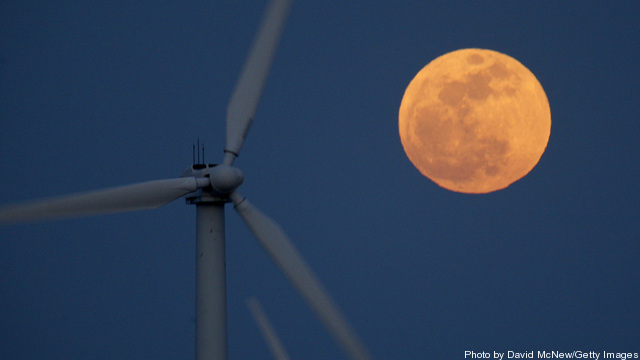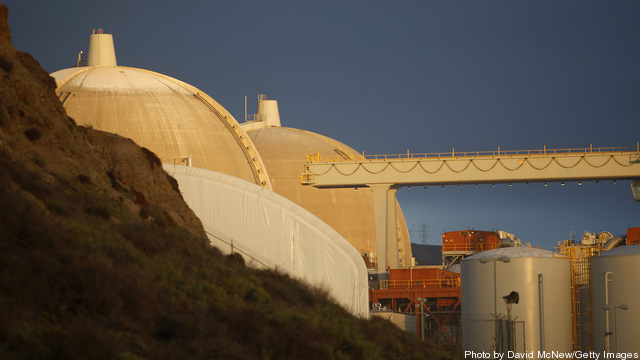California’s oilmen and farmers have begun to clash over the potential dangers of fracking, and perhaps over money, as well. “Many farmers do not own the underground rights to their property but would be compensated for access to the surface.” [New York Times] Also in California, Southern California Edison’s failure to inform regulators of the… Keep reading →
Southern California Edison
Sign up and get Breaking Energy news in your inbox.
We will never sell or share your information without your consent. See our privacy policy.
California regulators will direct the state’s largest utilities to return 85% of cap-and-trade proceeds to ratepayers. The move, which comes about a month after the successful completion of California’s first carbon allowance auction, aims at offsetting higher electricity costs resulting from the cap-and-trade program, by providing a “climate dividend” on utility bills.
On December 20, 1012, the California Public Utilities Commission (CPUC) unanimously approved a plan to distribute the utility sector’s carbon allowance revenues to ratepayers in the form of a biennial “climate dividend.” The plan directs three major investor-owned utilities – Pacific Gas & Electric, Southern California Edison, and San Diego Gas & Electric – to return 85% of proceeds from the sale of carbon allowances to ratepayers as rebates through the life of the cap-and-trade program. The dividend, estimated to range from $20 to $40, will appear as an automatic credit on utility bills every six months starting July 2013. The amount of money that will go to ratepayers in the form of rebates from 2013 through 2020 ranges from $5.7 billion to $22.6 billion. Keep reading →
 The San Onofre Nuclear Generating Station is seen from the beach along San Onofre State Beach on March 15, 2012 south of San Clemente, California.
The San Onofre Nuclear Generating Station is seen from the beach along San Onofre State Beach on March 15, 2012 south of San Clemente, California.
The head of the Nuclear Energy Institute yesterday said he was optimistic that California’s San Onofore nuclear plant would again start producing electricity and denied that the US industry was troubled by high costs and safety concerns after Fukushima. Keep reading →

March 2012 shattered US temperature records. What about the summer?
Electricity market operators are not generally fond of hot summers, when consumers turn up their air conditioners to stay cool, while straining the network, sometimes to the brink of disaster. This summer is no exception, especially in a few places where supplies are likely to be tight. Keep reading →

We’ll let you be the judge of which is which in today’s good, bad and ugly smart meter round up, which will fill you in on everything from the latest opt outs, roll outs and left outs – to sabotage and another conspiracy theory.
ROLL OUTS Keep reading →

Fuel cells’ prospects of becoming a significant energy source are growing as costs decline and technology advances, helping the two leading players in the US industry, FuelCell Energy, and Bloom Energy.
In a signal of growing confidence in the full cell business, Bloom Energy is the subject of speculation that it will go public this year, said Sam Jaffe, research manager at IDC Energy Insights. Keep reading →

The intermittent nature of solar power has long been its most obvious weakness. What happens when the sun stops shining? People still need power.
One California-based solar company, BrightSource Energy, says it has developed a way to solve the problem. On Monday the company announced that it will be including its SolarPLUS thermal energy storage technology to several of its concentrated solar power (CSP) solar plants. The storage units will allow power from the sun to be stored for the evening when the sun is no longer shining but demand is up. Keep reading →

Our existing grid is not as reliable as one would expect. What is the cure?
With no warning some 6 million residents across a wide stretch of Southern California, Southwest Arizona and the northern top of Baja California in Mexico lost power on 8 September 2011. It took hours to restore power. Coming a mere 8 years after the much bigger blackout affecting over 50 million people in Northeast US and province of Ontario in Canada in August 2003, it reminded anyone who needed reminding that the US electric grid is not as reliable or dependable as one would expect it to be. Keep reading →

Though its touted for its clean, green efficiency potential, smart grid may be getting sidelined in Washington.
That’s just one of the ways regulation and smart grid development are coming into conflict, according to regulators and utility officials at the GridWeek conference in Washington DC September 12-15. Keep reading →

